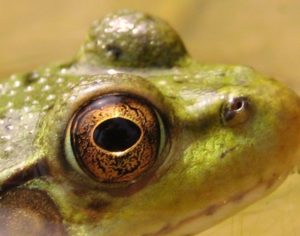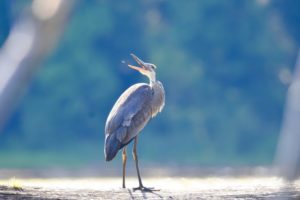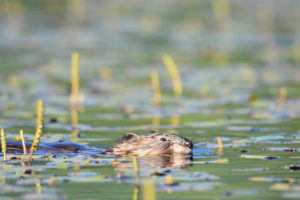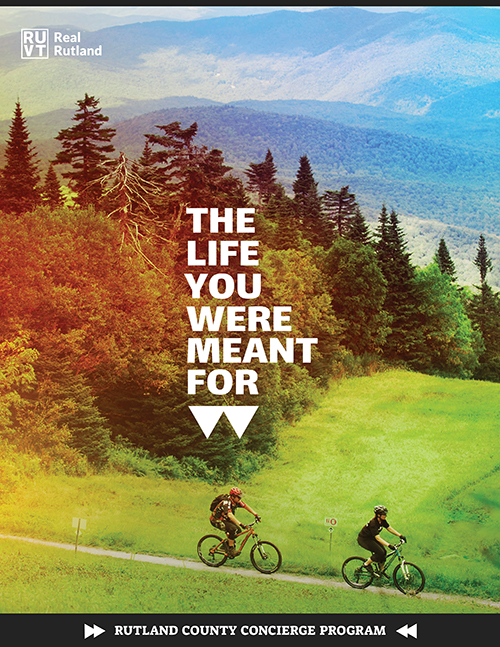Wildlife makes itself at home in Rutland County
Written by Steve Costello
Rutland County wildlife can be found around just about every bend in the road or trail, on the edges of small bays, brooks, and vernal pools, even in city backyards.
From the heart of Rutland to the region’s tallest mountain, here are three great places to take in nature and look for wildlife: Chittenden Reservoir, Pinehill Park, and the Bucklin Trail.
Bucklin Trail
 The Bucklin Trail begins 3.9 miles up Wheelerville Road from Route 4 in Mendon. The well-marked 3.6-mile trail (each way) winds through a hardwood forest, bisected by a small river and some tiny brooks as it climbs slowly, then somewhat steeply, to Killington Peak. You’ll be rewarded with stunning views that encompass much of New England and New York
The Bucklin Trail begins 3.9 miles up Wheelerville Road from Route 4 in Mendon. The well-marked 3.6-mile trail (each way) winds through a hardwood forest, bisected by a small river and some tiny brooks as it climbs slowly, then somewhat steeply, to Killington Peak. You’ll be rewarded with stunning views that encompass much of New England and New York
Whether you go to the top or turn around after a couple of miles, there are plenty of opportunities to see big and small wildlife. You might even see the state bird, the hermit thrush!
Stop along the river or any of the small water crossings, and depending on the season, you may see water bugs, tadpoles, or frogs. Stop in one of the forest meadows, and watch for blue jays, crows, ravens, porcupines, and red squirrels, and listen for the rat-a-tat-tat of downy, hairy, and pileated woodpeckers.
While typically more elusive, black bears, coyotes, moose, deer, and owls may also be seen here in various seasons with a little patience and luck. And regardless of what animals you see, you’ll enjoy one of Vermont’s most beautiful and peaceful hikes.
Pine Hill Park
The crown jewel of Rutland City’s park system, Pine Hill is a mecca for hikers and mountain bikers in summer and fall, hikers, fat-tire bikers, and skiers in winter – barely a mile from downtown. The 17 miles of trails crisscross 325 acres of woods and fields, so it’s a superb place to see wildlife.
 The park is home to deer, dozens of bird species including hawks and owls, beavers, and the occasional moose, bobcat, and coyote.
The park is home to deer, dozens of bird species including hawks and owls, beavers, and the occasional moose, bobcat, and coyote.
You could run into wildlife anywhere in Pine Hill, but Rocky and Muddy ponds are your best bet. From spring peepers to fall’s migrating Canada geese, the ponds provide food, habitat, and shelter to a wide variety of birds, animals, reptiles, and amphibians.
Chittenden Reservoir
While dozens of lakes and ponds dot Rutland County, Chittenden Reservoir is the crème de la crème. In spring, thousands of tadpoles and salamanders speckle shorelines, and loon chicks ride on their parents’ backs. In spring, summer, and fall, bald eagles and ospreys ply the water for food. To spot eagles from a distance, scan the trees for white dots, their heads, which stand out among the greenery.
Several trails run along the shore, but the best wildlife viewing is from the water. Kayak rentals are available on Dam Road, which leads to the reservoir. Kayak use is included for overnight guests at the Mountaintop Inn, the 750-acre lake’s only business. There’s a 5 mph speed limit on the reservoir, which is surrounded by thousands of acres of protected forest. The inn also offers pontoon tours.
 Most days, a slow paddle will reveal something for everyone, possibly including eagles and ospreys, loons, geese, ducks, mergansers, moose, deer, river otters, beavers (or at least a lodge or two), muskrats, turtles, and a variety of smaller birds, including kingfishers and sandpipers. Crawdads, frogs, and salamanders can be found along the pristine shore.
Most days, a slow paddle will reveal something for everyone, possibly including eagles and ospreys, loons, geese, ducks, mergansers, moose, deer, river otters, beavers (or at least a lodge or two), muskrats, turtles, and a variety of smaller birds, including kingfishers and sandpipers. Crawdads, frogs, and salamanders can be found along the pristine shore.
I’ve traveled as far as Africa to see wildlife, but two of my favorite experiences happened at Chittenden.
One evening, my wife and I were floating in our kayaks when we noticed a few frogs swimming past. Then a few more – then dozens. We followed them to the water’s edge, where thousands of frogs had gathered for an annual reproductive rite of spring.
Another time, we noticed what looked like a huge rock – in a spot where nothing but sand had been previously. As we paddled closer, we realized the “rock” was a 3-foot snapping turtle, his head and neck as thick as my thigh, sitting astride a slightly smaller female. A wildlife biologist estimated his age at 100 years old – about the same age as the manmade lake.


